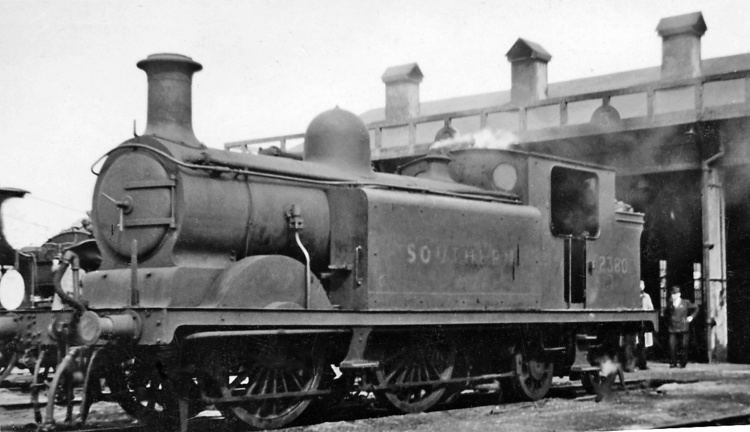Power type Steam Builder Brighton Works Total produced 36 | Designer R. J. Billinton Build date 1892–1896 | |
 | ||
LB&SCR D3 class was a 0-4-4T tank locomotive design, by Robert J. Billinton, built for the London Brighton and South Coast Railway (LB&SCR) between 1892 and 1896. They were built for working passenger trains along country and main lines.
Contents
Construction and working
Before working for the LB&SCR, Billinton worked for the Midland Railway's locomotive department, hence he had got used to 0-4-4T designs which that company used for similar work which the D3's were built for. The design centred on the idea of being an improved version of William Stroudley's D1 tanks, the D3 intending to be replace the D1s on certain duties. The design shared spare parts with Billinton's other designs, the cylinder's design being shared with the C2 goods engines, the boilers with the E4 radial tanks.
Their first employment was services radiating around Tunbridge Wells and outer-suburban work into London. One locomotive, number 363, was named after the company's chairman, Sir Julian Goldsmid, who was so fond of the engine he had an image of the locomotive used on the railway's cap badges. Another locomotive, No. 375 Glynde, was used to haul an armoured train for the 1st Sussex Volunteers for two years from 1896.
The class, along with other Billinton and Stroudley engines, were reboilered. Two were rebuilt as class D3x with larger boilers, but this proved to be ineffective, and smaller boilers were used on the rest, which remained as class D3. After the First World War, the class were increasing more at the countryside end of the system in their operating scope.
Southern Railway
The locomotives passed to the Southern Railway (SR) in 1923. They were soon seeing new changes, as 10 members of the class were moved to London Bridge to act as carriage shunters, while from 1931 the repairs and overhauls of the class were undertaken at Ashford works rather than at Brighton, after the latter works was mothballed.
Electrification and the transfer of locomotives from other areas were the first real threats towards the class's survival, some spending time in store, and the first withdrawals taking place from 1933. However, they were fitted for working motor trains (otherwise known as Push-pull trains) by the Southern during the 1930s to replace D1 tanks, although the D3 were considered rougher riding.
World War Two: Luftwaffe versus D3
During World War II, on 26 November 1942, one engine, number 2365, was working an afternoon New Romney to Ashford passenger train through the Romney Marshes near Lydd when she was attacked by a low-flying German fighter aircraft. Cannon fire from the plane caused the dome on the top of the engine's boiler to burst, but no railway staff or passengers were hurt. Either by actual contact as he misjudged his dive, or in the sudden uprush of steam from the boiler, the pilot lost control of his plane and, as it crashed, he was flung out and drowned in a dyke. The engine was reboilered and returned to service on the New Romney branch early the following year.
Other members of the class which had been stored before the war found themselves being pressed back into service; when fears for an invasion were at their worst, this led to some being moved away to other places, including Salisbury.
British Railways
Twenty-eight locomotives passed to British Railways in 1948, and they were numbered 32364-32398 (with gaps). Although still working motor trains successfully, the class in general were becoming worn out. The D3s were replaced by former South Eastern H class and London & South Western M7 class tanks engines during the early 1950s. Most were withdrawn by 1953, but one, 32390, remained in traffic for two more years until being cut up at Brighton Works in 1955. During those two years she was used to cover for failing M7s from Tunbridge Wells, or for special railtours. Her last days were spent working from Brighton on services to Horsham. None of the engines has survived into preservation.
